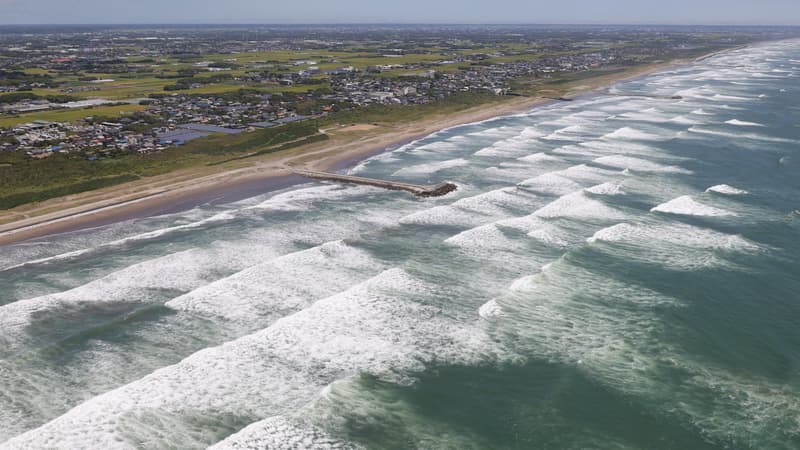An earthquake of magnitude 8.8, the most powerful in the region in almost 73 years, hit Tuesday on the Russian Kamchatka peninsula, causing tsunamis in Russia and Japan and triggering alerts in almost the entire Pacific.
A tsunami in the Pacific Ocean caused floods in Severo-Kourilsk, in the north of the Russian Kourile archipelago, the Ministry of Emergency Situations announced.
The videos published on social networks have shown buildings invaded by water in this city of approximately 2,000 inhabitants, whose population has been evacuated.
At the same time, live images on Japanese television showed people by evacuating the car for higher areas, especially on the northern island of Hokkaido, where a first 30 cm tsunami was observed.
The American Institute of Geophysics (USGS) had initially informed an earthquake of a magnitude of 8.7, before raising its power to 8.8. It happened around 11:25 PM GMM on Tuesday at 20.7 km deep, about 126 km from the capital of the Kamchatka region, in the distant Russian East.
This magnitude is the strongest recorded since 1952 in the Kamchatka region, according to local seismological services.
“Again immediately!”
Japanese NHK television transmits special coverage with a presenter asking the inhabitants of the coasts to evacuate: “Evacuate immediately to save their lives.”
The employees of the Fukushima Nuclear Plant (northern Japan), destroyed by a powerful earthquake and a tsunami in March 2011, were evacuated, said their operator.
“Tsunamis will hit repeatedly. Do not venture into the sea and do not approach the coast as long as the alert does not get up,” warned the Japanese weather agency (JMA).
Initially he announced a tsunami up to one meter, but this prognosis took three meters.
Some railway lines have been suspended. “The residents of the regions where alerts have been issued must immediately evacuate safe places, high areas or evacuation buildings,” said government spokesman Yoshimasa Hayashi.
Waves up to meters
The Japanese alert is related to the entire north coast and east of the archipelago, south of Osaka, as well as the small peripheral islands. Beyond that, as in the Bays of Tokyo and Osaka, the tsunami could reach a meter.
The American Tsunamis Center (PTWC), which describes the potential impact of “dangerous”, alerts on a risk of waves of more than three meters along certain coasts of Ecuador, the northwest of the Hawaiian Islands and Russia.
The tsunamis of one to three meters above the level of the tide are also possible along certain coasts of Chile, Costa Rica, French Polynesia, Guam, Hawaii, Japan and other Pacific Islands and Archipelosos, he adds.
Finally, you can expect tsunamis to a meter elsewhere, especially in Australia, Colombia, Mexico, New Zealand, Tonga and Taiwan.
In Mexico, the authorities ordered the inhabitants of the entire Pacific coast, from Fabariforms to Chiapas, to stay away from the ocean.
The Philippines also urged the inhabitants of the East Coast to move towards the land, providing a tsunami up to 1 m between 05:20 and 06:40 GMT, and advised fishermen who are already in the sea.
The United States has issued a series of alerts of different levels along the west coast of North America of Alaska to the entire Californian coast. Tsunami alerts have been broadcast on mobile phones in California, according to AFP journalists.
Several registered aftershocks
At least six replicas have shaken the region, one of which is the magnitude 6.9 and another of magnitude 6.3, according to the USGS. Kamchatka’s seismological service warned that up to 7.5 replicas are expected in the next few days.
On July 20, an earthquake of magnitude 7.4, followed by many replicas, had also occurred off the Kamchatka coast, without making important damage.
The epicenter of Tuesday’s earthquake is approximately the same as that of a massive shock of magnitude 9.0 occurred in November 1952, which had caused a devastating tsunami throughout the Pacific, said the USGS.
The Kamthatka Peninsula is the meeting point between the Pacific and North America tectonic plates, which makes the region one of the most active seismic areas on the planet. Since 1900, seven large -scale earthquakes, of a magnitude greater than or equal to 8.3, have occurred throughout this peninsula
Source: BFM TV


